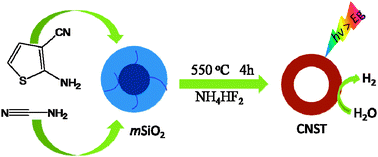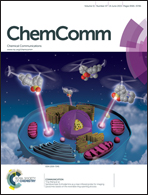Shell-engineering of hollow g-C3N4 nanospheres via copolymerization for photocatalytic hydrogen evolution†
Abstract
Incorporation of aromatic motifs into the nanosized shells of hollow carbon nitride nanospheres has been reported to develop functional photosynthetic structures for solar energy application. This modification results in an extended π-conjugation system, red-shift of the optical absorption, and an improved charge separation in the shell, while still retaining the unique hollow polymeric nanoarchitectures. This strategy enables the tuning of the semiconductor properties of the shell substance in the hollow carbon nitride nanostructures to generate the redox species to enhance photocatalytic activity for hydrogen evolution using visible light.


 Please wait while we load your content...
Please wait while we load your content...